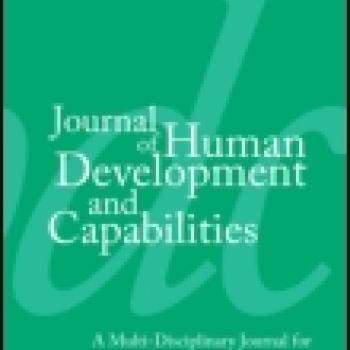Publication Information

Studying chronic poverty using retrospective qualitative data (life-histories) in conjunction with longitudinal panel data is now recognized to provide deep and reliable insights. This paper uses three rounds of panel data and life-histories collected by Young Lives, a longitudinal study of childhood poverty, to identify factors that contribute to households becoming or remaining poor in rural Ethiopia. It combines a case-centred and a variable-centred approach, analysing and comparing the experiences of individual households (cases) using qualitative and quantitative techniques and interrogating these findings by looking at attributes of households (variables) across a larger sample. The substantive findings on poverty "drivers" and "maintainers" support those of previous studies: rainfall, illness, debt, exclusion from the main social protection scheme. But by mixing different types of data and analysis, the paper shows that combinations of factors rather than single events drive households into poverty, and that household characteristics play an important role. The primary contribution of the paper is methodological as it presents a novel method of using life-histories to investigate chronic poverty in rural Ethiopia by generating or testing hypotheses/findings on poverty drivers and maintainers.
Keywords: Ethiopia, chronic poverty, life-histories, panel data, mixed methods, case studies
The final published version of the article is available on the journal website.

Studying chronic poverty using retrospective qualitative data (life-histories) in conjunction with longitudinal panel data is now recognized to provide deep and reliable insights. This paper uses three rounds of panel data and life-histories collected by Young Lives, a longitudinal study of childhood poverty, to identify factors that contribute to households becoming or remaining poor in rural Ethiopia. It combines a case-centred and a variable-centred approach, analysing and comparing the experiences of individual households (cases) using qualitative and quantitative techniques and interrogating these findings by looking at attributes of households (variables) across a larger sample. The substantive findings on poverty "drivers" and "maintainers" support those of previous studies: rainfall, illness, debt, exclusion from the main social protection scheme. But by mixing different types of data and analysis, the paper shows that combinations of factors rather than single events drive households into poverty, and that household characteristics play an important role. The primary contribution of the paper is methodological as it presents a novel method of using life-histories to investigate chronic poverty in rural Ethiopia by generating or testing hypotheses/findings on poverty drivers and maintainers.
Keywords: Ethiopia, chronic poverty, life-histories, panel data, mixed methods, case studies
The final published version of the article is available on the journal website.

